Antialiasing Complex Global Illumination Effects
in Path-space
Laurent Belcour
Montréal University
Montréal University
Ling-Qi Yan
UC Berkeley
UC Berkeley
Ravi Ramamoorthi
UC San Diego
UC San Diego
Derek Nowrouzezahrai
Montréal University
Montréal University
Antialiasing Surface Appearance
Image from Mitsuba [Wenzel Jakob]
Antialiasing Surface Appearance
Antialiasing Surface Appearance
- Idea: limit materials frequency to reduce noise
- Adapt texture resolution to screen resolution
- Better cache handling for textures
Antialiasing Surface Appearance
- Idea: limit materials frequency to reduce noise
- Adapt texture resolution to screen resolution
- Better cache handling for textures
- Method: use the pixel's footprint
- Geometrical method: what is the pixel's projection?
- Use the pixel/ray derivatives [Igehy 1999]
Antialiasing Surface Appearance
Problem Statement
- Differentials work fine for specular interaction
- Extended to rough interaction by [Suykens and Willems 2001]
- But limited ...
- Fail short to model subtle effects
- Binary footprints: no pixel filter
- Decorrelated light in antialiasing
- Can build differentials from light [Schjøth et al. 2007]

image from [Suykens and Willems 2001]

Problem Statement
- Bidirectional path tracing requires symmetric light transport
Our Solution
- Stop thinking in terms of geometry!
- Use frequency analysis to define antialiasing kernels
- Adapt textures frequency to incoming light-field frequency
- Make modern path tracing (e.g., BDPT) a first class citizen
- Support multiple non-specular bounce
- Antialiasing kernels using both eye and light paths
- Simple implementation
- Extension of ray class, similar to ray differentials
Previous Models for Antialiasing
- Filtering is defined by surface area: $\color{red}{\mathcal{P}}$
Our Model for Antialiasing
- Pixel filter is a kernel applied on the surface!
Frequency Analysis Perspective
- This kernel is a low-pass filter on the SV-BRDF:
Fourier domain
What is the Kernel?
$$\Sigma =
\begin{pmatrix}
\sigma_{xx} & \sigma_{xy} & \sigma_{xu} & \sigma_{xv} \\
\sigma_{yx} & \sigma_{yy} & \sigma_{yu} & \sigma_{yv} \\
\sigma_{ux} & \sigma_{uy} & \sigma_{uu} & \sigma_{uv} \\
\sigma_{vx} & \sigma_{vy} & \sigma_{vu} & \sigma_{vv} \\
\end{pmatrix}
$$
$$\Sigma =
\begin{pmatrix}
\color{red}{\sigma_{xx}} & \sigma_{xy} & \sigma_{xu} & \sigma_{xv} \\
\sigma_{yx} & \color{black}{\sigma_{yy}} & \sigma_{yu} & \sigma_{yv} \\
\sigma_{ux} & \sigma_{uy} & \color{blue}{\sigma_{uu}} & \sigma_{uv} \\
\sigma_{vx} & \sigma_{vy} & \sigma_{vu} & \color{black}{\sigma_{vv}} \\
\end{pmatrix}
$$
- Use statistical analysis in Fourier space [Durand 2005]
- Second order information is relevant [Belcour 2012]
- Similar to a Gaussian approximation of the kernel
- Construction similar to Ray Differentials
- Initialize at light/eye vertex and propagate
- Account for rough interactions and volumes
- How to specify it?
- Using the pixel filter function
- Similar to Pre-Filtered IS [Colbert and Krivanek 2009]
Covariance Antialiasing
Bidirectional Antialiasing
Bidirectional Antialiasing
eye kernel
material
light
light kernel
material
light
Bidirectional Antialiasing
$$ \color{blue}{\Sigma_e} \; + \; \color{green}{\Sigma_l} \; = \; \Sigma $$
Bidirectional Antialiasing
Implementation details
- We need to re-evaluate BSDFs at each connection
- To account for the mean covariance
- In practice we can re-evaluate at connection vertices only
- Mitsuba Implementation
- Added a RayCovariance class
- Convertion to RayDifferential before BSDF evaluation
- Providing a Small PT [Beason 2010] example
- Available on GitHub
Kernel Validation
Kernel after one bounce
Results
Results: Snails
- Unidirectional antialiasing kernels
- Using [Yan 2016] normal map model
- Focusing on indirect footprints with glossy materials
Results: Spoon
- Bidirectional antialiasing kernels
- Using [Yan 2016] normal map model
- Focusing on long light paths (caustics)
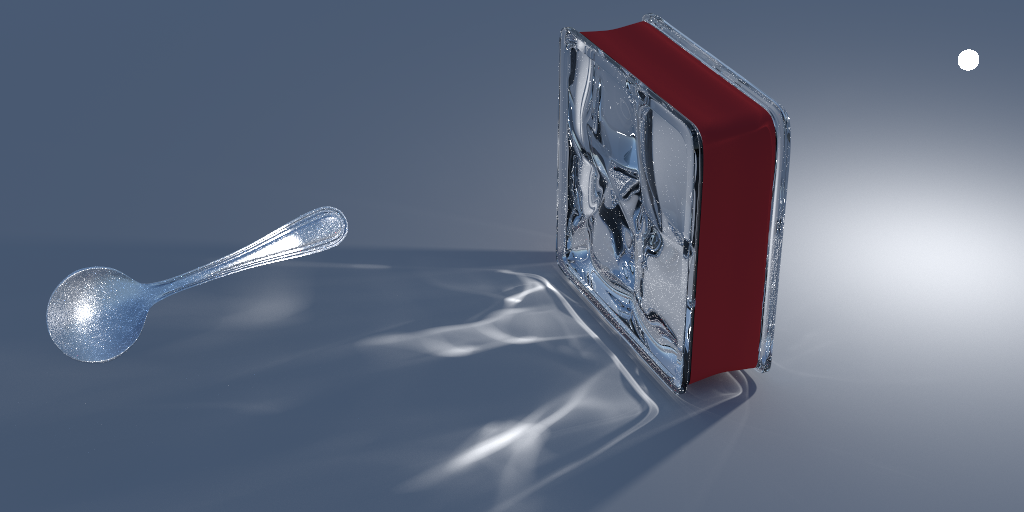
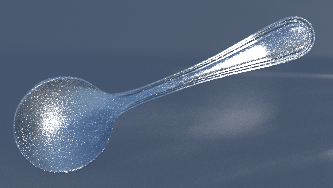
Ours (~50min)

Reference (24 days)
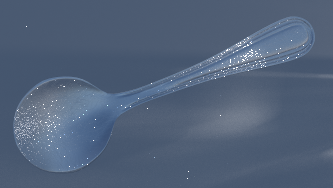
BDPT (equal-time)
Results: Christmas
- Bidirectional antialiasing kernels
- Highly indirect illumination
- Complex lighting (light bulbs)
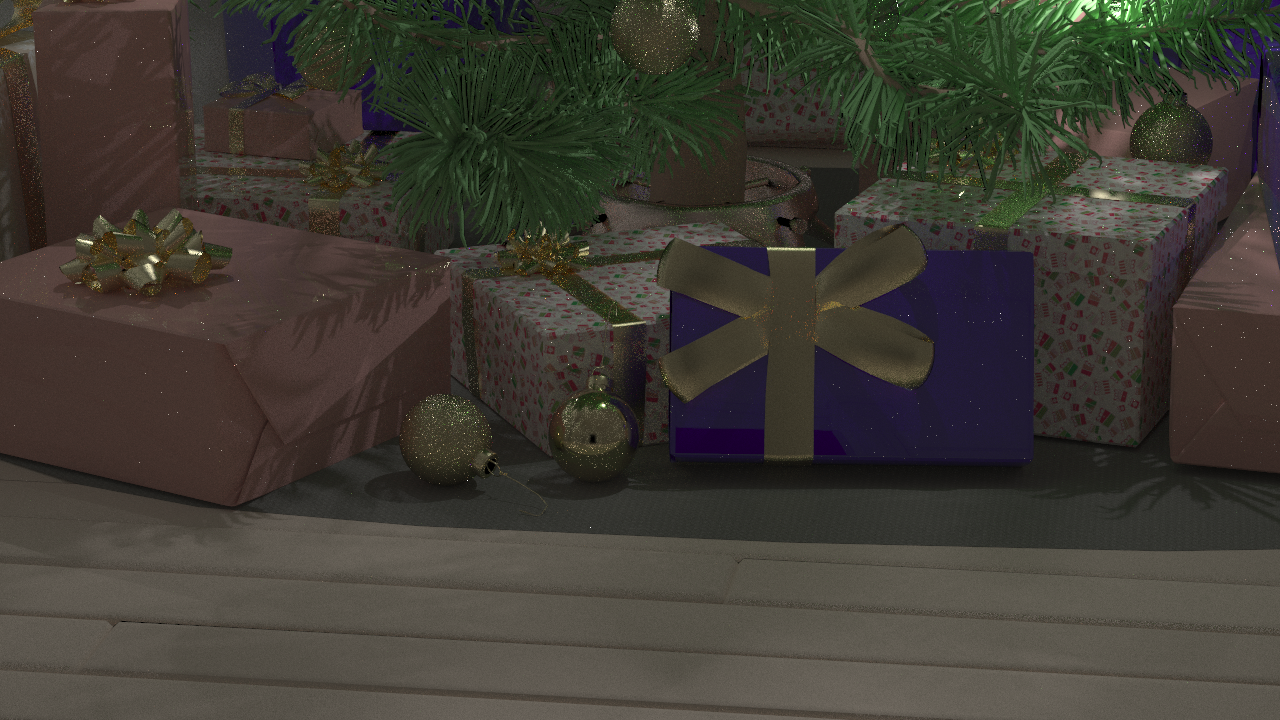
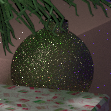
Ours (~4h)

Reference (141 days)
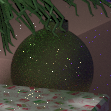
BDPT (equal-time)
Limitations and Future Work
- Limitations
- Only treated spatial antialiasing
- Stationary footprint
- Future directions of work
- Incorporate geometry in antialiasing (curvature, ...)
- Antialiasing kernels for participating media
- Other uses of covariance tracing
Thank you for your attention
 |
 |
| paper | code |